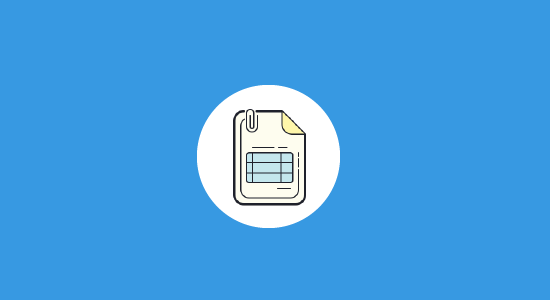Creating accurate and tailored proposals and quotes is essential for sales teams who want to make a strong first impression and improve their chances of closing deals. Salesforce, with its robust CRM capabilities, provides the tools needed to generate customized proposals quickly, ensuring clients receive relevant, data-driven information that aligns with their expectations.
In this guide, we’ll walk through a step-by-step process for creating proposals in Salesforce, focusing on methods to streamline your workflow, enhance personalization, and keep your documents organized and accessible.
Why Proposals and Quotes Matter in Salesforce
Salesforce is a powerful platform for managing customer relationships and sales activities, and its proposal and quoting features add essential value by:
- Improving Efficiency: Salesforce enables you to generate quotes directly from CRM data, eliminating repetitive data entry.
- Enhancing Customer Experience: Customizable templates allow for personalized proposals, helping clients feel valued and understood.
- Maintaining Consistency: Using pre-defined templates ensures that every proposal aligns with your brand guidelines and communicates the same level of professionalism.
For teams looking to speed up this process even more, GetGenerative.ai is an excellent proposal creation in Salesforce, allowing you to create professional, data-driven proposals in minutes.
This tool enhances personalization while saving time, making it easier to keep up with fast-paced sales cycles.
How to Create a Proposal or Quote in Salesforce
Follow these steps to create proposals or quotes in Salesforce quickly and effectively, without sacrificing accuracy or personalization:
1. Design a Template for Your Proposals
Creating a flexible, well-organized template is the first step in generating proposals in Salesforce.
- Define Essential Fields: Include fields for client names, addresses, dates, pricing, and product details. The more specific your fields, the easier it will be to generate personalized quotes.
- Include Key Proposal Elements: Add sections such as pricing tables, terms and conditions, e-signature fields, and product descriptions to make the document comprehensive and easy to understand.
- Save as a Template: Save your design as a template that can be reused, ensuring consistency across all proposals.
By setting up a structured template, you’ll save time on formatting and can focus on personalizing each document to match individual client needs.
2. Access the Quote Object in Salesforce
The Quote Object in Salesforce is your main tool for creating quotes linked to specific opportunities.
- Navigate to the Opportunity: From the “Opportunities” tab, select the opportunity you want to associate with the quote.
- Create a New Quote: Inside the opportunity, select “New Quote” to begin generating the quote document. This link between opportunities and quotes allows you to track each proposal within the context of the overall sales process.
3. Add Products to Your Quote
Adding products to your quote is crucial for creating clear, informative proposals that clients can easily understand.
- Select Relevant Products: From the Quote Object, you can select the products that best match the client’s requirements. For each product, include descriptions, quantities, and specifications.
- Adjust Pricing as Needed: Use the Price Books feature to pull in standard prices or make adjustments for specific deals, adding relevant details that align with the customer’s needs.
This step ensures that every proposal is unique to the client while also maintaining pricing accuracy.
4. Customize Pricing and Discounts
Pricing and discounts often need customization based on the nature of each client relationship. Salesforce allows you to apply various pricing strategies directly within the quote.
- Use Standard Price Books: Salesforce Price Books help keep pricing consistent and can be updated with specific adjustments.
- Apply Discounts: Within the Quote Object, you can add discounts, either as a percentage or fixed rate, making it easy to adjust proposals for different customers.
5. Finalize and Save the Quote
Once you’ve added products, set prices, and applied any necessary discounts, it’s time to finalize the quote.
- Review the Quote for Accuracy: Check that each detail aligns with the customer’s expectations, including products, pricing, and any customized elements.
- Save and Export: After confirming all details, save the quote and export it as a PDF or send it directly from Salesforce. This seamless process keeps everything within the CRM, ensuring your documents remain organized.
6. Track Proposal and Quote Status within Salesforce
Salesforce offers robust tracking features that allow you to monitor client engagement with proposals and quotes.
- View Document Status: Once shared, Salesforce can display whether the document has been opened, reviewed, or signed by the client.
- Set Up Notifications: Use notifications to alert you to important actions, such as document views or edits. This keeps you informed of client interest and helps you follow up promptly.
Tracking document status is essential for understanding client interest and ensuring your proposals are reaching the right stage in the sales process.
7. Link Proposals to Opportunities for Better Tracking
Linking proposals to specific opportunities within Salesforce provides a consolidated view of your sales pipeline and enhances team collaboration.
- Associate the Document with an Opportunity: Make sure each quote or proposal is linked to the relevant opportunity in Salesforce, making it easier to track deal progress.
- View Opportunity Metrics: Linked documents allow you to monitor metrics such as the proposal’s creation date, status, and deal size, giving you insights into your sales pipeline at a glance.
By keeping all proposal information connected to opportunities, you can avoid duplication and keep the team aligned on each deal.
Best Practices for Creating Proposals and Quotes in Salesforce
1. Update Templates Regularly
To keep proposals relevant, update your templates regularly with fresh branding, updated pricing, and any new products or services. This ensures consistency across all documents and aligns each proposal with your company’s current offerings.
2. Use Accurate and Detailed Product Descriptions
A well-detailed product description helps the client understand what’s included, why it’s beneficial, and how it addresses their needs. Detailed descriptions make proposals more persuasive and help clients see the value in your offerings.
3. Set Up Approval Workflows for Quick Review
For quotes requiring special pricing or unique conditions, set up automated approval workflows in Salesforce. This streamlines internal approvals and helps you respond to client requests promptly. Also read – Salesforce CRM Implementation With AI
4. Leverage CRM Data for Personalization
Use Salesforce’s CRM data to add a personal touch to each proposal. Include information like client names, recent interactions, or specific needs mentioned in past conversations, making each document tailored and engaging.
5. Monitor Metrics and Adjust Strategy as Needed
Salesforce tracks valuable metrics on quotes, like approval rates, average discounts, and time-to-close. Use these insights to refine your quoting process and improve both the speed and effectiveness of your proposals.
Common Challenges in Salesforce Quoting and How to Solve Them
1. Customizing Quotes for Specific Clients
Customization is sometimes difficult when handling complex client requirements. To manage this, make full use of Salesforce’s customization fields and, if available, advanced features like configurable price books to accommodate unique needs.
2. Approval Delays for Special Pricing
Special pricing often requires higher-level approvals, which can slow down the quoting process. To address this, leverage Salesforce’s approval workflows to automate and expedite the approval process, reducing time spent on back-and-forth reviews.
3. Data Accuracy
Maintaining accurate product and pricing data can be challenging, especially if you handle frequent updates. Regularly review and update Salesforce data to ensure that the information in your quotes is accurate and aligned with current offerings.
Conclusion
Creating proposals and quotes in Salesforce is a straightforward process when you use its CRM data, template options, and tracking features effectively. By following the outlined steps, your sales team can produce accurate, engaging, and personalized proposals that make a lasting impression.
With a clear approach, creating quotes in Salesforce becomes a streamlined task, helping you close deals faster and build stronger customer relationships.
Frequently Asked Questions (FAQs)
Q1: How does Salesforce help with creating quotes?
Salesforce offers tools like the Quote Object and Price Books to help sales teams create consistent, professional quotes and proposals linked to specific opportunities, streamlining the sales process.
Q2: Can I apply discounts to quotes in Salesforce?
Yes, Salesforce allows you to add discounts directly in the Quote Object, either as a percentage or a flat rate, helping you adjust pricing based on client needs.
Q3: What are Price Books in Salesforce?
Price Books are a feature in Salesforce that stores product pricing information. They allow you to standardize and customize pricing for different clients or markets within quotes.
Q4: Is it possible to track quote activity in Salesforce?
Yes, Salesforce allows you to monitor the status of quotes, including whether a document has been viewed or signed by the client, helping you stay updated on client engagement.
Q5: Why should proposals be personalized?
Personalized proposals show clients that you understand their specific needs, building trust and improving the likelihood of a successful sale. Salesforce helps achieve this by allowing you to use CRM data to customize each document.





